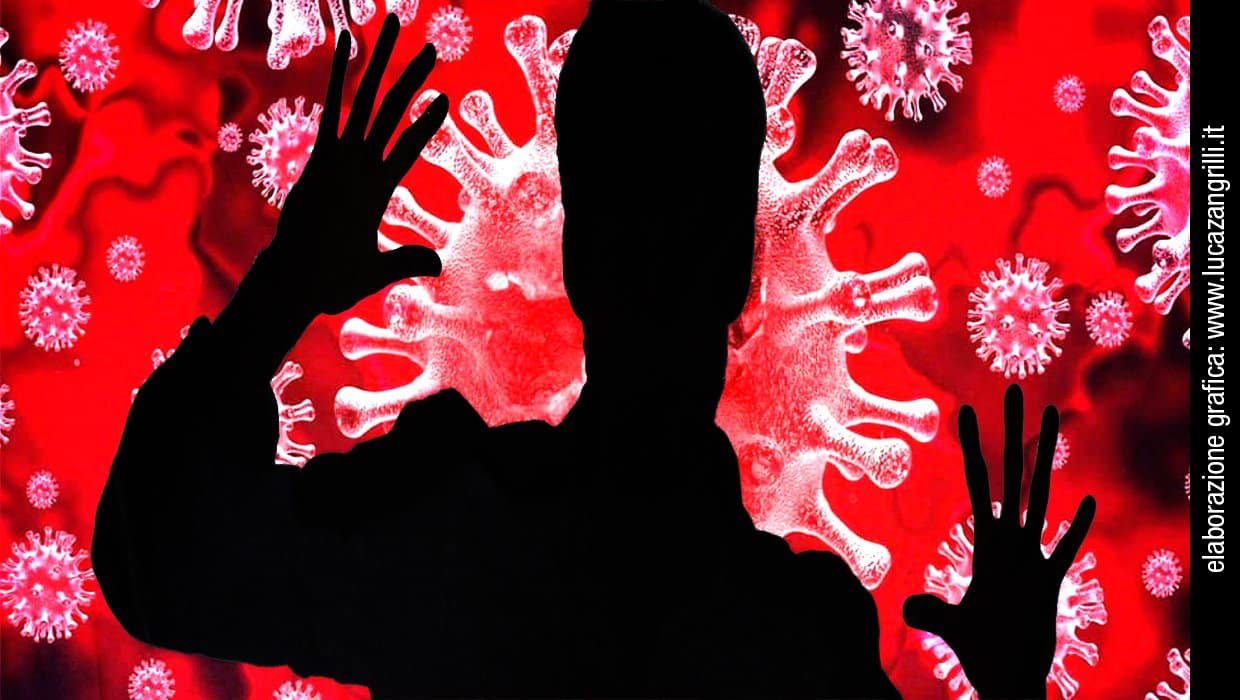(An abstract of the report expounded from the Author during the XXXVIII National Congress of the Italian Society of Medical Psychotherapy held at Brindisi on 3rd, 4th, 5th June 2005)
To understand the pathogenetic role of infantile fantasies we must refer to Freud’s theory “of forgetting” which, in modern terms, we could define “cybernetic”. I have illustrated this thesis vastly in my work: “Trauma, Memory and Cybernetic Structure of The Mind” and to which I address the reader. Here, I would only like to underline that Freud had observed close connections between the actual symptomatic and the forgotten past and through this theory of the non-translation of codes, he had attempted to find an explanation for the phenomenon.
The process, though, is ulteriorly complicated by the fact that the human being, from the moment in which he is already able to fantasise, has not yet refined an efficient mechanism of discrimination between that which he produces subjectively and that which he perceives from the external world: it is the so-called “Omnipotence of Thought State”. At the moment in which an Ego is endowed with the narcissistic omnipotence, therefore, still fused with the Id, it creates its own fantasies; these become part of the lived reality of the subject, with the same intensity and concreteness as real events.
Not only. We must consider and meditate upon this beautiful phrase by Otto Fenichel, used as a note in his splendid work: “The psychoanalytic theory of neurosis” ( W.W. Norton & Co., New-York): “The separation of the Ego from the external world is not sudden but it is a gradual process. It is also, naturally, a heterogeneous process, since encounters happen between the reality and one’s own body, which are capable of forming the Ego and are related to several necessities. The Ego that follows, for this reason, has many “nuclei”. A definitive Ego is formed by a synthetic integration of these nuclei and in certain stages of the regression of the Ego it is possible to observe how this divides itself into the original nuclei”.
The breaking pathogenetic role of the infantile fantasies can be seen, in fact, in the cases of multiple personalities which are a characteristic of the dissociative syndrome. In my opinion these forms are residuals of the normal fantasising activity of the child (who incessantly creates its own new identities) residuals embedded in subjects endowed with an Ego which is not sufficiently structured and in which, massive phenomena of denial and splitting, are predominant.
The imaginative characters which fill the child’s games, whilst in the normal subjects who have an efficient reality-testing, limit themselves to filling up the game and the dream, whereas in border-line subjects or psychotics
these overflow into the real life and acquire corporeity.
Let’s take a look at the material of a young woman affected by a psychotic syndrome with imposing phenomena of splitting and with multiple personality.
“There are moments in which I have the sensation that I have another person inside me who pushes me to do things, who puts words in my mouth. I hear a voice that comes from the left, as if there were another person who is speaking in my ear. What is this voice? Should I listen to it? There is another person inside me. And I don’t know what to do. Is it normal for me to hear this voice? It makes me think that it is nothing but my own voice, but it’s as if it has its own thoughts, its own way of thinking. When I was a child I used to pretend to be many different people, then the beautiful one grew up, she got married and had a daughter who seemed to be a star. I have a daughter in my head. << Dad, I have had a daughter who has my same name and she tells me to tell you things >> I don’t feel well, my head hurts, I have another ‘me’ inside me who I ate! And when my real daughter was born, unconsciously, I believed that she was the daughter of my fantasy: my fantasy was born! These personalities that I have created, I keep them with me since always! This fantasy has grown, I have always kept it inside me. As a child I needed company and I used to speak continuously with my fantasy. Then, the other ‘me’ died and it pained me so. I told my Dad that she was dead but she had a daughter and I had to look after her! Then people say that you get hallucinations! Only in the moment in which you remember the fantasies, can they be recognised as such. Then I wanted all my relatives to die because nobody believed what I said. In the end I used to pretend to be dead and I would say to my mother: <<You can’t speak with the dead!>> In reality, it was my wish to die because no one believed me. Fantasies upon fantasies which finally I killed: <<You are dead, I’ll shoot you and I’m going to poison you!>>
Everybody left me alone because nobody liked that game.
Nowadays, this voice bothers me and it makes me nervous. Because I don’t know whether to stop it. Is it not that I believe to have been broken by this very voice? Now I’m afraid of my own illness’’.
The desire fantasies realise, in an omnipotent way, incompatible desires or they fulfill real intolerable frustrations.
A child with an enormous internal loneliness, accentuated by the isolation within her family environment, can fill her own life with clones of herself. Obviously, there is also the attachment to the ideal Ego and, consequently, to the safeguarding of one’s own narcissism.
We can also find the strength of the infantile fantasies in the possible residuals of infantile or adolescent fantastic activities in absolutely normal subjects: an established professional accomplished a long and detailed study of his life material so that he could finally understand that his firm belief of being the proprietor of a fantastic motorbike which he had locked in his garage and, unfortunately, according to him, of which he had forgotten the precise location, in reality was a powerful desire phantasy.
This event could seem far-fetched but it will help us to understand why if we consider that the adolescent conscious desire of possessing a motorbike as that of his coetaneous, in reality, worked as a screen-memory of an even more archaic desire of getting onto his maternal grandfather’s motorbike, just as his brother used to do.
This dream was, in its turn, a privileged representation of the desire to be an integral part of the maternal line from which the subject had always felt excluded.
Reconsidering Freud’s research and those of the classic Authors about perversions, we can draw some efficient definitions which still have a high operative value:
1 – In the perversions the sexuality is substituted by one of the components of the infantile sexuality.
2 – The perverts have suffered a block of the normal psycho-affective development. The fact that the perversions often develop in reaction to sexual disillusions, confirms the role of regression. In his “Introductory Lectures On Psycho-Analysis” (1916-1917) Freud applied a simple formula: the people who react to the sexual disillusions with a regression towards the infantile sexuality are perverts, the people who use others defences are neurotics.
As Daniela Marenco reminds us in her works “Sexuality and Sexual Acting-out” published in this Revue, “P. Blos in an article of 1957, talking about “female delinquency” introduces the term ‘sexual acting-out’ indicating with this a sexuality acted with various partners and with no real affective connotation. In another written work he defines the acting-out as a tension regulator, this mechanism protects the organism from the intropsychic anxiety, shifting the conflict from the Ego to the external world. The conflicting tension is not elaborated psychically and translated into symbolic terms but discharged compulsively by the act”. 1
We can certainly affirm that the severe pervert is basically a border-line subject with narcissistic aspects of the personality, blocked in a world of partial objects which are eversions of one’s very own megalomanic Ego.
The pervert substantially lacks the object relation, the perception of the Other as a person and other things different from himself.
The perverse “acting-out”, after all, realises a self-erotic use of the external world which is always available for momentary and immediate gratifications.
The pervert is only interested in the external world as a partial object to alleviate tension: his partner loses every individuality and must be possessed in order to maintain the omnipotent narcissistic illusion.
We often find situations of complete affective isolation in the infantile history of perverts and, not seldom, the same family entourage is constituted by adult perverts who, with various social justifications, have intimate contact that does not arrive to the point of acting out a manifest sexual activity with the child but produces a continuous state of frustrated and unsatisfied excitement.
The tensional surplus feeds the production of fantasies which are always more complex and are often the cause of explosions of erotomaniac delirium in the adult age. A notable prudence is always recommended when listening to detailed reports of infantile sexual violence or of severe acts of seduction: if a real basis, above all at the unconsciously activated desire level, is always verifiable, not seldom, after a sufficient number of sessions a substantial re-dimensioning of such “memories” are noted.
Once again D. Marenco reminds us that when Freud speaks about adolescence as a phase of the return of the repressed and a recapitulation of Oedipus and he defines the definitive renunciation of the infantile sexuality as the task of the adolescent sufferance with the submission of the partial libido drives to the genital primacy, he also implies the creation and stabilisation of a different way of relating oneself to the libido object and to one’s own body as well as to the external reality in general. 2
The renunciation to the sexual infantile polymorphism and to the unconscious fantasies connected to it implies the recognition of one’s own body and of its limits together with the recognition of the complementariness of the sexes, therefore, a re-dimensioning of the omnipotent infantile vicissitudes: understanding that, so as not to die, we need an object which allows us to eternalise ourselves.
The profound modifications, which occur during adolescence, should lead, firstly, to a modification of the processes of the perception and of the search for the object: from an object chosen according to narcissistic gratifications one passes to the perception of an object different to oneself that is recognised as uncontrollable in an omnipotent way.
Only an improvement of the reality-testing and of the possibility of discerning the reality from the fantasies and the desires, essential requirement for the perception of the real external object, can permit such a maturation.
Finally, we will look at the material of a young woman carrier of a narcissistic and semi-autistic structure , who, after a long micropsychoanalitic analysis, manages to shatter her shell and perceive the concreteness of the objects; “Suddenly I have understood something: that the Others are different from me, they can’t be like me [she cries shocked] That is why I never accepted anything, it was impossible to live, nothing is like yourself, everything is different! My God what omnipotence! In a moment I thought that everything that surround me was generated by me! Really, I felt like a God! Suddenly, I feel myself channelled into a journey, which will be my journey, and it’s such a tiny thing, so limited! I feel as though I have finally taken my place. I feel like laughing because finally I’m going to do terrestrial things. I feel as if I have descended onto this planet! It’s fantastic! [she cries and laughs] I ‘m finally here! I feel like I have been assembled instantaneously and for the first time I have descended onto the earth!”.
The psychoanalysis makes angels fall and permits disincarnate structures to occupy the place in the world that Destiny has assigned to them.
Written by: Quirino Zangrilli © Copyright
Translated by Linda De Nardo
Notes:
1 Daniela Marenco, Sessualità ed agito sessuale, Scienza e Psicoanalisi, 2005.
2 Daniela Marenco, Sessualità ed agito sessuale, Scienza e Psicoanalisi, 2005.
Nel 2024 riceve il Premio Accademico d’Onore della Accademia Culturale Internazionale Cartagine 2.0.
Nel 2024 docente ad Almaty – Kazakhstan presso il workshop di psicoanalisi sul tema della violenza, promosso dall’Università di psicoanalisi di Mosca in collaborazione con l’Istituto svizzero di micropsicoanalisi.
Doctor Quirino Zangrilli was born in Fiuggi in 1955. Graduated with honours in Medicine and Surgery in 1980, he practices Psychoanalysis, with intensive method, since 1982. He is author of 72 scientific pubblications. He has attended as speaker or president of session to many national and international scientific Conventions. His book “La vita:involucro vuoto” (Life: empty involucre), published by Borla in 1993, has been in use by the Chair of Dynamic Psychology at Turin’s University since 1994. He is the author and founder of the multimedia review “Psicoanalisi e Scienza” (Psychoanalysis and Science), the most read Italian on line review of psychoanalysis. In 2012 he participated as a Speaker at the Scientific Festival of BergamoScienza. In 2013 he illustrated his research on the maternal-fetal interaction in the Special Session of the XI World Congress of Perinatal Medicine in Moscow with his relation “Intrauterine Imprinting”. He is visiting teacher at Moscow Institute of psychoanalysis and training psychoanalist of Swiss Institute of Micropsychoanalysis.
In 2024 he is a teacher in Almaty – Kazakhstan at the psychoanalysis workshop on the topic of violence, promoted by the Moscow University of Psychoanalysis in collaboration with the Swiss Institute of Micropsychoanalysis.
In 2024 he received the Honorary Academic Award of the Carthage 2.0 International Cultural Academy
Le Le Docteur Quirino Zangrilli est né à Fiuggi en 1955. Diplômé avec mention en Médecine et Chirurgie en 1980, il pratique la psychanalyse depuis 1982, en utilisant une technique intensive. Il est l’auteur de 72 livres et publications scientifiques. Il a participé en tant que conférencier ou président de session à de nombreuses conférences scientifiques nationales et internationales. Son livre “La vie : enveloppe vide”, publié par Borla en 1993, est adopté depuis 1994 par la Chaire de Psychologie Dynamique de l’Université de Turin. En 1994, il a reçu le “Prix national Ciociaria de médecine”. Il a conçu et fondé le magazine multimédia “Psicoanalisi e Scienza”, qui est le magazine de psychanalyse en ligne en italien le plus suivi au monde. (Source : Entireweb, Alexa, Google, Virgilio, Arianna., etc.). En 2012, il a participé en tant que conférencier à la colloque scientifique de BergamoScienza. En 2013, il a exposé ses études sur l’interaction materno-fœtale lors de la session spéciale du XIe Congrès mondial de médecine périnatale à Moscou avec le rapport “Intrauterine Imprinting”. Il est chargé d’enseignement au cours de spécialisation de trois ans en psychanalyse, psychothérapie psychanalytique et consultation psychanalytique à l’Université de Moscou. Il est membre didacticien de l’Institut Suisse de Micropsychanalyse et de la Commission pour la Pratique de celui-ci.
En 2024, il enseigne à Almaty – Kazakhstan à l’atelier de psychanalyse sur le thème de la violence, promu par l’Université de Psychanalyse de Moscou en collaboration avec l’Institut Suisse de Micropsychanalyse.
En 2024, il reçoit le Prix Académique Honoraire de l’Académie Culturelle Internationale Carthage 2.0.
В 2024 году является преподавателем в Алматы – Казахстан на семинаре по психоанализу на тему насилия, проводимом Московским университетом психоанализа в сотрудничестве со Швейцарским институтом микропсихоанализа.
В 2024 был награжден Почетной академической премией Академии Международной Культуры «Карфаген 2.0».














